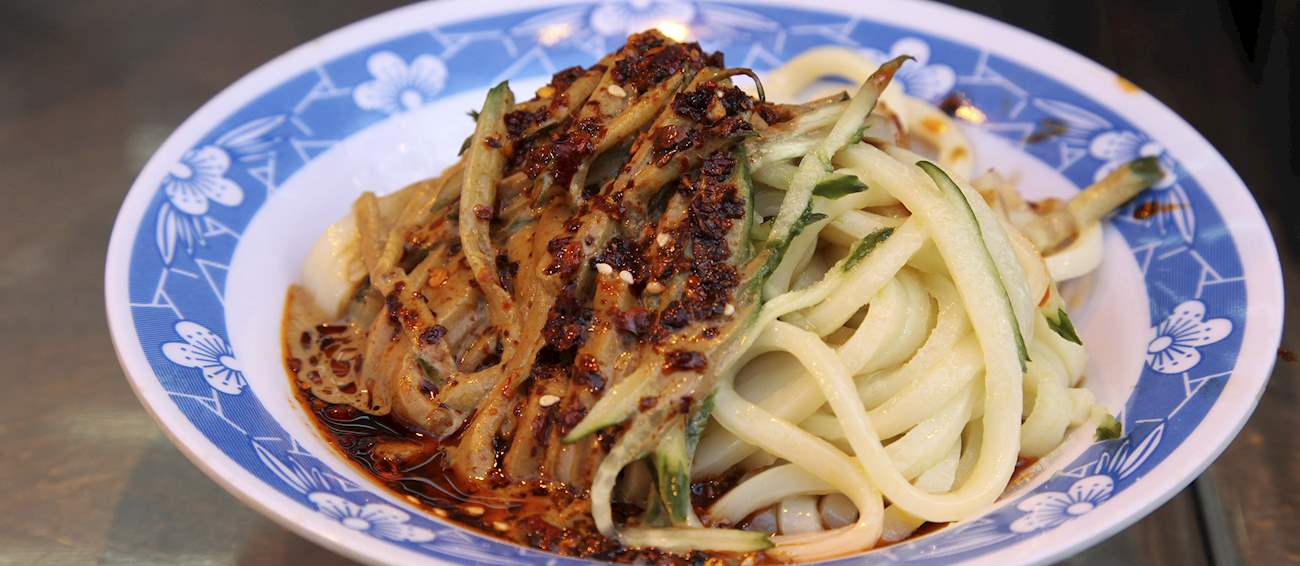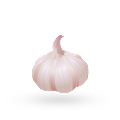Best Shaanxi Foods
Biangbiang noodles, also known as belt noodles due to their broadness and length, are a specialty of Shaanxi province in China. The noodles are usually topped with vegetables and herbs such as spring onions, garlic, leeks, coriander, Sichuan peppercorns, cumin, and chili.
There are two stories about the origin of these unusual noodles: one says that the name stems from the sound of handmade noodles being stretched and flapped, and the other one says that the word biangbiang was invented by a Chinese Emperor. Unusually, the word biang doesn't exist in the Chinese language, and it is made up of 57 strokes, the most of any Chinese character.
Liangpi is a noodle dish that originated in China's Shaanxi province. To prepare the dish, noodles that are made from either wheat flour, rice flour, or a combination of both are dressed with soy sauce, chili oil, and vinegar, while typical garnishing includes thinly sliced strips of cucumber, bean sprouts, and cilantro.
The meaning of the name when translated is cold skin, referring to the chewy, thick, and translucent texture and appearance of the noodles, while their genesis, according to a folk tale, happened during the Qing Dynasty. Depending on what ingredients are used, several variations of the dish exist; liangpi from the city of Hanzhong is prepared with steamed garlic and hot chili oil, maijang liangpi is named after the black sesame paste that's used in the sauce, and shan xin gan mianpi is garnished with wheat gluten, mashed garlic, and bean sprouts in a sauce made with vinegar, chili oil, and salt.
Rou jia mo is a traditional burger and street food item originating from the province of Shaanxi. The dish consists of a bun (bai ji mo) that's usually stuffed with braised pork belly. Although there are variations, the pork belly is often braised with a mixture of onions, ginger, hot peppers, sugar, soy sauce, various spices (over 20), and Shaoxing wine.
The buns date back to the Qin dynasty, while the braised pork dates back to Zhou dynasty. In the past, the buns were baked in a clay oven, but nowadays they're usually cooked in a pan. These small sandwiches are sold by street vendors in Shaanxi, but they're also enjoyed throughout the country, and beef or lamb are often used as a substitute for pork belly.
OTHER VARIATIONS OF Burger
Guokui is a traditional flatbread originating from the Shaanxi province, now popular in various regions across China. Known for its large, thin, and crispy texture, guokui translates to "pot helmet," reflecting its distinctive shape when cooked.
The bread is typically large and round, resembling a flattened disc, with a crispy outer layer and a soft, chewy inside. In Shaanxi, there is also guokui type that is round in shape, more reminiscent of a bread loaf than a flatbread, about a foot in diameter, an inch in thickness, and weighs about 2.5 kg.
The preparation starts with making dough from wheat flour, water, and sometimes yeast or baking powder for leavening.
Paomo, a specialty of the Shaanxi cuisine, is a stew consisting of steamed and leavened bread (mó) that is soaked in a simple mutton soup and typically eaten in the city of Xi'an. The invention of the dish is often ascribed to the Song Emperor Zhao Kuangyin, while the name of the stew, when translated from Chinese, reveals its main feature: soaked bread.
Additions commonly include rice noodles and chopped greens, while a side of pickled garlic and sweet chili paste has a principal role in elevating the flavors of the dish. Depending on the type of meat used, there are two variations; yangrou paomo made with lamb, and niurou paomo made with beef.
TasteAtlas food rankings are based on the ratings of the TasteAtlas audience, with a series of mechanisms that recognize real users and that ignore bot, nationalist or local patriotic ratings, and give additional value to the ratings of users that the system recognizes as knowledgeable. TasteAtlas Rankings should not be seen as the final global conclusion about food. Their purpose is to promote excellent local foods, instill pride in traditional dishes, and arouse curiosity about dishes you haven’t tried.










